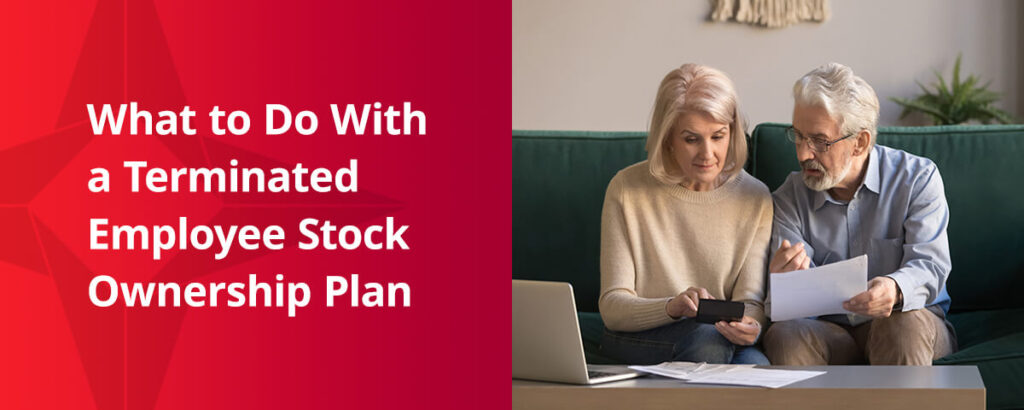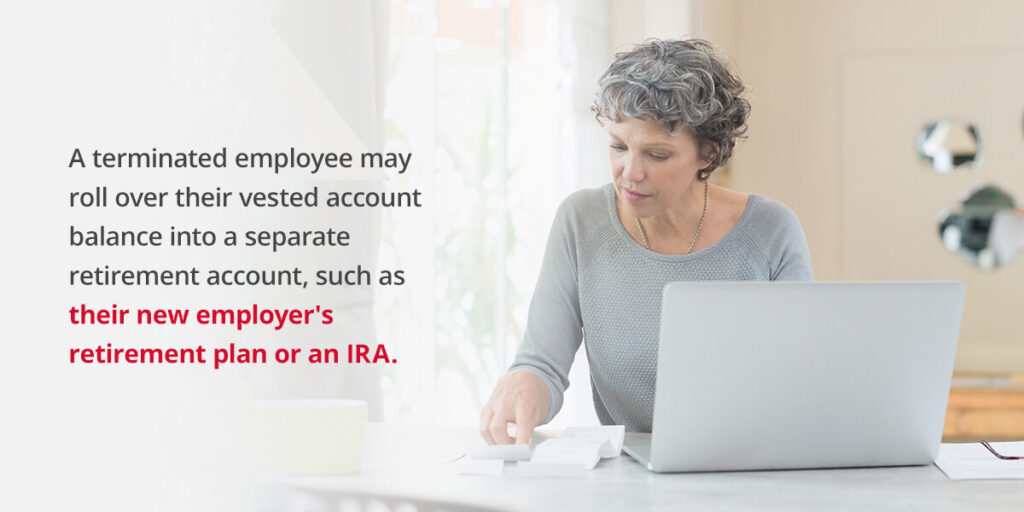
An employee stock ownership plan, otherwise known as ESOP, is much like an employer-provided retirement plan to encourage employees to buy shares of corporate stock and reap the rewards of their role in the company’s success. Generally, you can only buy stocks after being with your employer for a specific period. So what happens to your employee stock when you leave the company before retirement?
Regardless of why you’re leaving your job, research what will happen to your ESOP benefits and options. For instance, you can only take your vested portion of plan benefits with you. It’s wise to review your plan document for detailed information about your options. In the meantime, here’s our detailed guide about everything you need to know now.
What You Need to Know About ESOP Payout After Termination
Receiving an ESOP distribution after leaving employment depends on the circumstances under which you left your job. It also depends on when the ESOP’s annual reporting period ends. Here are the different time frames in which distribution begins with ESOP after termination of employment.
- One year after the annual reporting period ends and a participant leaves the company due to disability, retirement or death.
- Six years or fewer after terminating employment with the company.
- If your employer fired you, it may take up to 11 years to receive your full distribution of ESOP payout after termination.
- When you leverage the ESOP, your shares may only become available after paying the loan in full.
You should consider several factors regarding ESOP taxation and distribution. Your tax obligations will depend on your financial situation and age. You may maintain your tax benefits as a plan participant, whether it is a terminated or modified ESOP plan. ESOP shares only get taxed at the time of distribution.
While the IRS generally taxes ESOP distributions as regular income, the distribution counts as an early withdrawal when you are under 59 ½ years old. Early withdrawals may incur an additional 10% tax on top of your regular income tax. Employees may do an ESOP rollover into a self-directed 401(k), traditional individual retirement account or Roth IRA to avoid tax penalties. When doing an ESOP rollover to Roth IRA or traditional IRA, you have 60 days to complete the process.
In the case of an ESOP termination, the ESOP trustee will give each plan participant interest from the stock sale proceeds based on the percentage of shares they own in their ESOP account. These payouts may depend on how much money is in the ESOP and the information in the plan documents.
Participants can roll their ESOP shares or cash distributions from an ESOP shares sale into a self-directed IRA or another qualified plan. Alternatively, you can continue holding your private shares or freely invest your available cash into alternative assets like real estate while maintaining a tax-deferred status on your shares.
How to Receive ESOP Shares After Termination of Employment
When leaving your company, you might have a short window that allows you to exercise your remaining ESOP stock options. During this time, check the plan document to know how long you have. In some cases, the circumstances under which you leave can impact the amount of time you have.
The next step is to decide how you will receive your ESOP shares. A good plan is to exercise within 90 days to retain your ISO status. To simplify the process, we’ve compiled a list of possible actions terminated employees can take to receive their ESOP shares.
1. Roll Over ESOP to IRA

A terminated employee may roll over their vested account balance into a separate retirement account, such as their new employer’s retirement plan or an IRA. When employees take their distributions before reaching age 59 ½, they become subject to an additional 10% tax penalty along with their mandated IRS taxes. To avoid the 10% tax penalty on ESOP shares, the terminated employee should be at least 55 years old.
Alternatively, you can strategically roll over your ESOP shares into a Roth IRA, which can help you avoid the 10% tax penalty. You can either do this as an individual or with your new employer to circumvent income and capital gains taxes. These ESOP funds will then become subject to the new retirement plan rules.
2. Withdraw Assets Into a Non-Retirement Account
You may withdraw your assets into a non-retirement account to receive distributions from the ESOP after ending employment. If you are under 59 ½, you may need to pay taxes on the full amount taken and a 10% early ESOP withdrawal penalty.
3. Take Equal Periodic Payment
As a terminated ESOP participant, you may request equal periodic payments for the rest of your life. While this will help you avoid paying the ESOP early withdrawal penalty, you will still need to pay taxes on these payments. Alternatively, you may spread the distributions over six equal payments for five years after qualifying for distribution.
When receiving your ESOP payout in installments, you may notice the amounts increasing or decreasing as the stock’s value changes over time.
4. Receive Distributions in a Lump Sum
Whether you decided to leave the company or your employer terminated your contract, you may receive your ESOP distributions through one lump sum once you qualify for distribution. When taking a lump sum from your ESOP account as a form of employer stock, you might defer additional taxes on the stock until you sell it.
Roll Over Your ESOP Shares With Accuplan

If you have an ESOP, you must understand your distribution options and how to maximize your shares. That’s why our team of skilled professionals at Accuplan Benefits Services dedicate ourselves to making this process easier for our clients. Accuplan is a valuable solution for self-directed IRA administration and a smooth retirement. Our dedicated experts deliver firsthand knowledge, quality service and security.
Have any questions or need help setting up a retirement account? Schedule a consultation with our experienced team for assistance or fill out an application to open your self-directed IRA account today.
Our information shouldn’t be relied upon for investment advice but simply for information and educational purposes only. It is not intended to provide, nor should it be relied upon for accounting, legal, tax or investment advice.